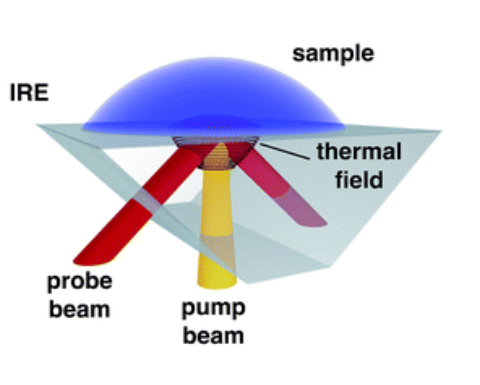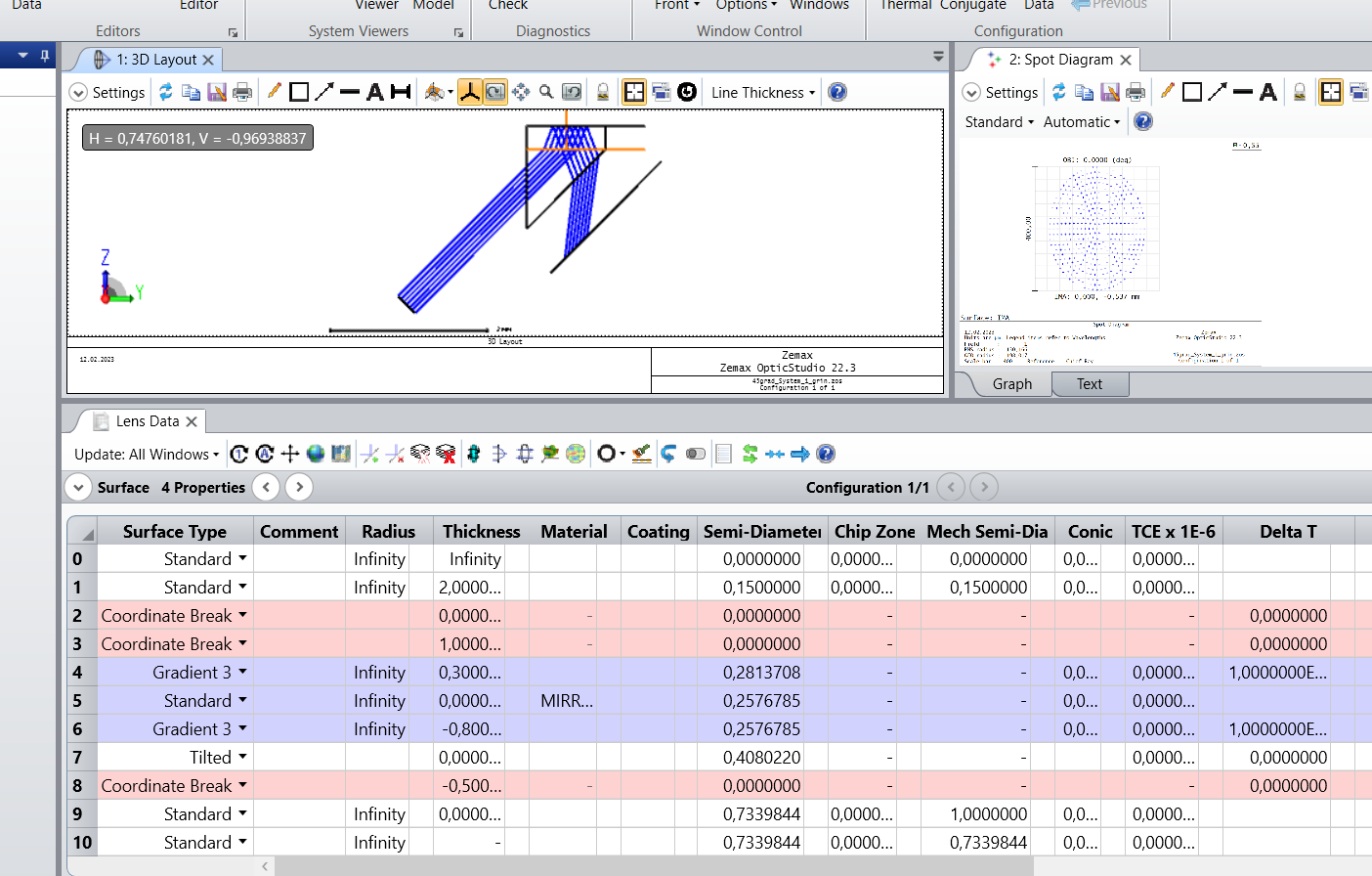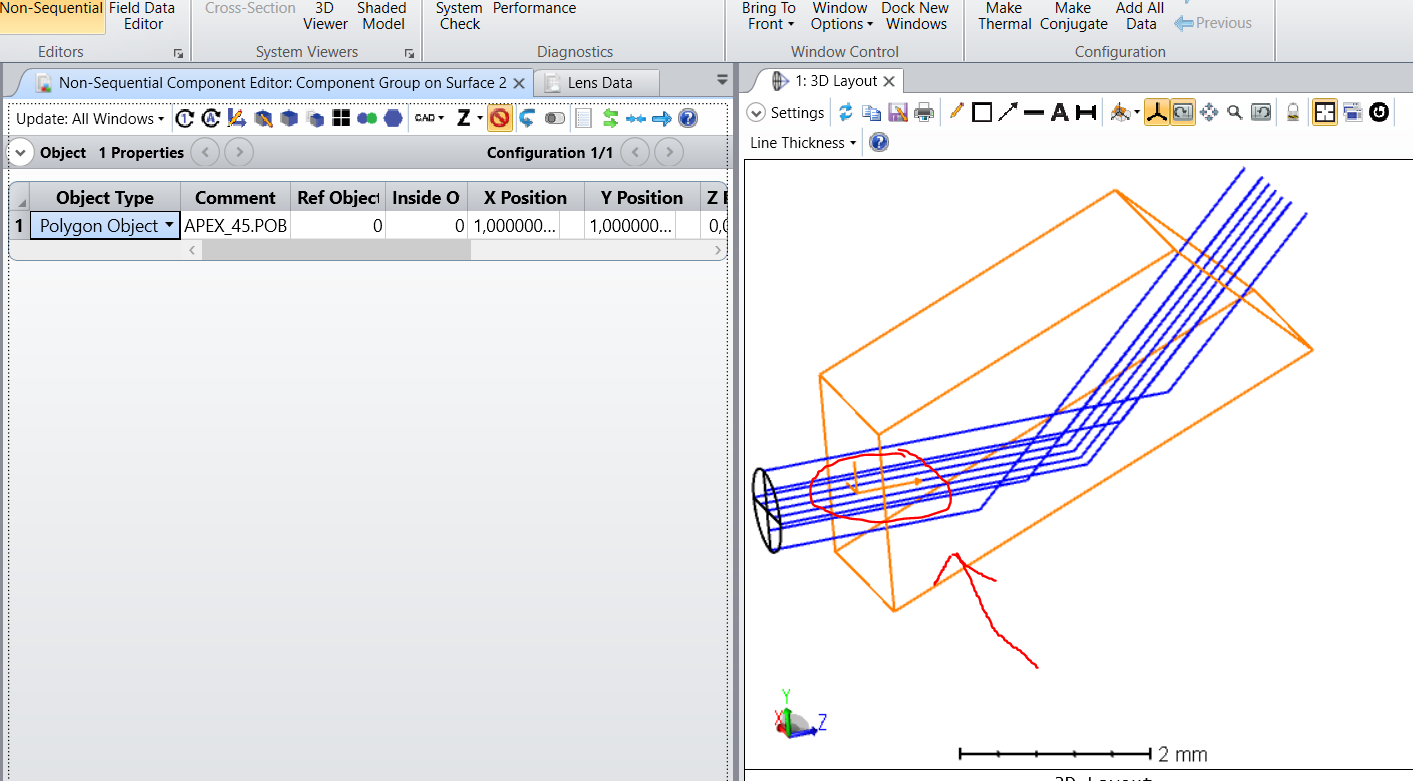Hi everyone,
I am relatively new to this software, so apologies for my newbie questions and please bear with me.
I would like to model an sequential optical system to simulate the probe beam of a FTIR spectroscopy system:

I have conducted the thermal analysis with another software already and I intended to model the probe beam path in the shown crystal with a gradient 3 surface type. I have also already prepared the variables for gradient 3 properties.
This is what I have been able to model so far:

Surface 2, Coordinate Break: is for tilting the probe beam with an 45° angle
Surface 3, Coordinate Break: is for decentering the probe beam and is not relevant to this question
Surface 4, Gradient 3: is the beam path up until the internal reflection/mirror. This is where it gets tricky for me: as you can see in the first picture, the probe beam has to enter the crytsal perpendicularly. The first surface of the crystal and the reflective surface are set in an angle of 45°.
In my optical system, the probe beam does not enter the crystal perpendicularly and I cannot simply tilt Surface 4 because that would violate my Gradient 3 Properties. The z-Axis of the crystal has to be parallel to the global z- Axis.
Is there a simple way to create a lens with Gradient 3 properties and with a z-Axis that is parallel to the global z-Axis but its first surface is tilted 45°?
Thank you




